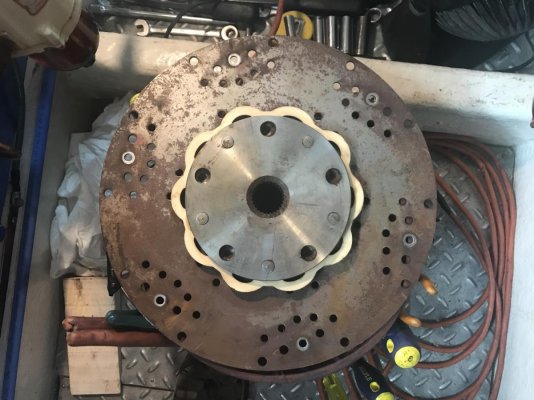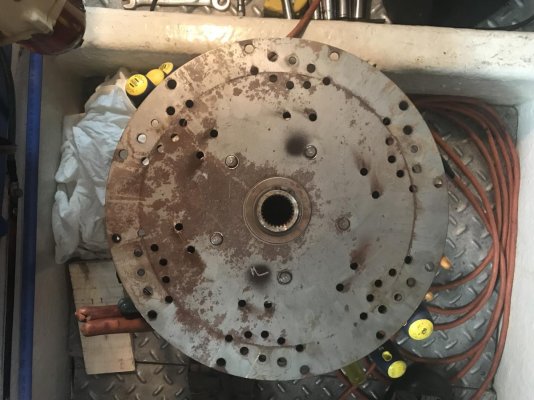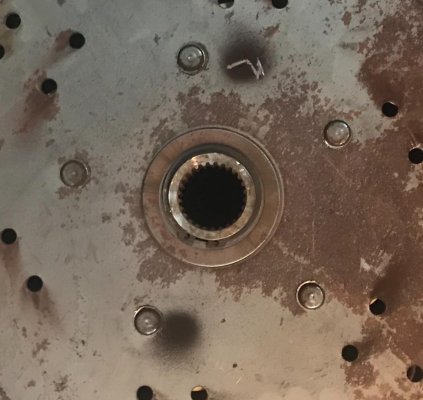Angus, just went through this on my port tranny. I pulled the tranny for a rebuild and found the same exact drive plate that your pic shows. Upon close inspection found small cracks in the poly material, and the poly was very hard.
The trans shop said that the tranny showed signs of gear rattle and chatter from that drive plate. Also that that design was for a much higher HP drive line.
The drive plate was not "dampening" the vibrations as it should have.
I replaced the drive plate with a new one recommended for the Lehman/Velvet Drive system, the difference in smoothness and quietness was very noticeable.
The new drive plate was 1/3 the cost of the poly insert one.

Talk to Mike Vogt at Harbor Marine in Everett ,WA. A world of knowledge on marine tranny's and propulsion systems. They do a lot of rebuilds on all makes, an impressive operation. He won't steer you wrong or sell you something that you don't need.
Bill








